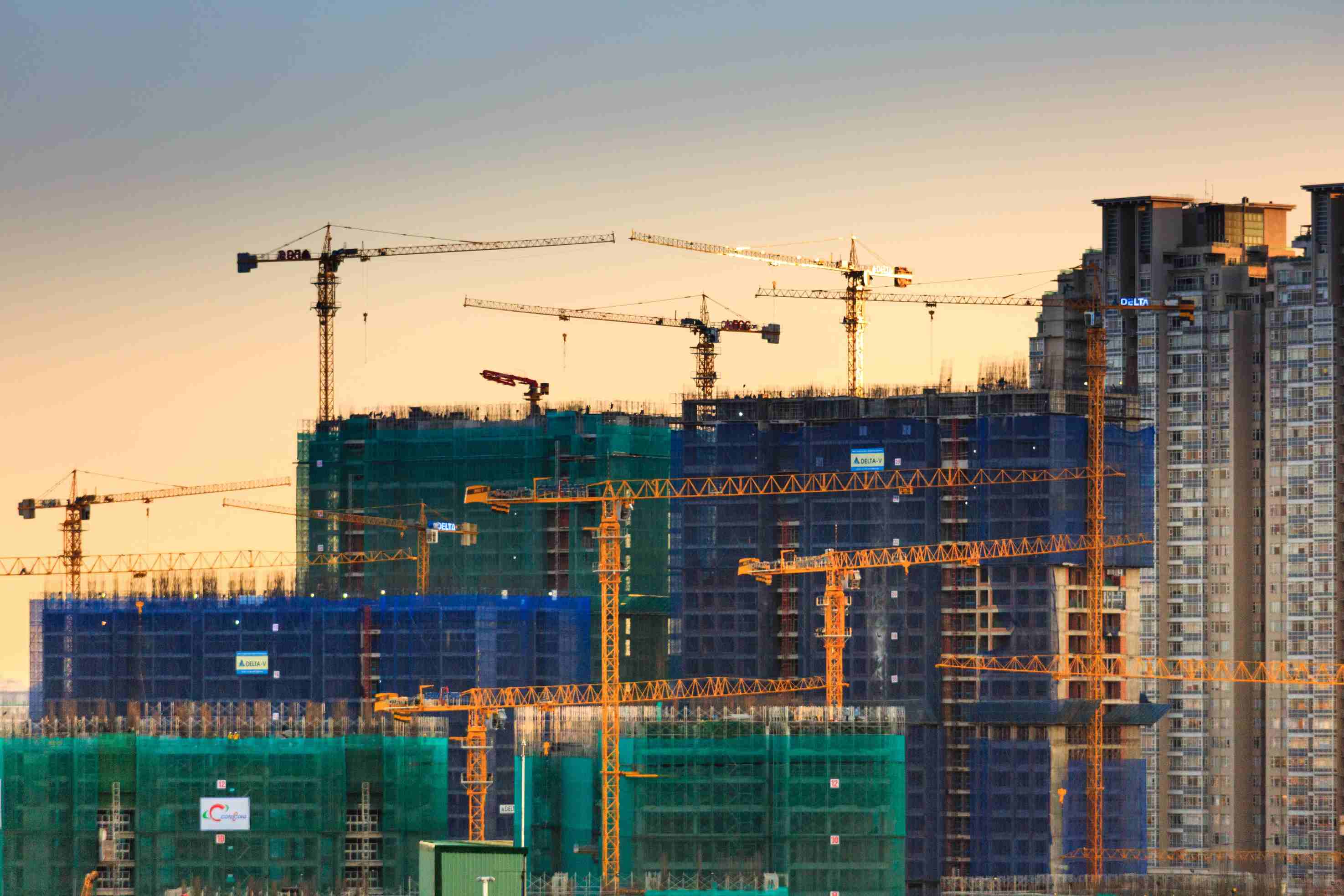 首页
>
新闻资讯
>
外贸干货
>
2021对冲疫情冲击,多国竞掀基建潮
首页
>
新闻资讯
>
外贸干货
>
2021对冲疫情冲击,多国竞掀基建潮
2021对冲疫情冲击,多国竞掀基建潮

2021对冲疫情冲击,多国竞掀基建潮
当经济不振时,政府最擅长、也最有可能推动的是什么?我们从美国大萧条时期和日本失去的30年里看到的经验是:大兴土木、大修基建。
美国众议院于日前通过了历史性的1.2万亿美元基础设施法案,拜登总统为此提出的口号是“建设更美好美国”。这是自20世纪50年代艾森豪威尔发展州际公路系统以来,美国在基建方面的最大投资计划。AT&T首席执行官约翰·斯坦基预测,2022年将是美国基础设施投资的大年。拜登则称,美国即将迎来“基础设施建设的十年”,美国经济将进入“长期繁荣”的十年。
12月1日,欧盟委员会批准了对外基建投资计划,欧盟委员会主席冯德莱恩把该计划作为欧盟未来的主要对外经济政策之一。欧盟提出的“全球门户”计划,总投资将超过3000亿欧元,希望和中国以及美国在基建这一领域进行竞争。
12月11日,中国国家发改委提出,适度超前开展基础设施投资。
回看历史,经济借助科学进步、技术突破经历一段长期的快速发展之后,会进入一个增速稳定甚至下降的阶段。该阶段,因经济蛋糕不能继续做大,各阶层通过过度竞争的手段抢食有限的利益,在此过程中,占据强势地位的阶层将获得更多利益,从而导致贫富差距的进一步拉大、阶层的分化、社会的动荡。为了弥合这些扩大的矛盾、维持经济的稳定和社会结构的有序,人为增加就业岗位、加大政府干预力度是过去100多年市场经济国家的常规操作。
不少经验证明,在经济低迷期,稳定经济最好的方式是发展基建,或许现在许多国家又到了这样的时期。不过也该看清楚,兴修基建对促进经济发展更具有可持续性。近90年前,为了应对1933年高达25%的失业率,当时的美国总统罗斯福在上台初期,开始推行基础建设“以工代赈”的罗斯福新政;1935年,罗斯福又推出了公共事业振兴署,几乎囊括了所有能想到的对公众有益的项目:高速公路,养护环境,水利设施,维护公共卫生,再造森林,防控洪灾等,甚至还包括流浪狗收留站、图书馆等在当时看来“华而不实”的内容。从罗斯福新政的经验来看,我们完全可以把基础设施投资的概念放宽一些,图书馆、博物馆、国家公园乃至流浪狗收容站,这些设施在中国远远谈不上饱和,以21世纪的标准来说甚至可以说得上是稀缺了。
中国财政科学研究院金融研究中心副主任封北麟表示,中央提出2022年适度超前的基建投资概念范围还可以扩大和升级,应当围绕5G、人工智能、智慧城市、绿色投资等补短板领域展开。所谓“适度超前”,隐含着提高基建的技术标准,科技化、智能化水平更高,相应投资力度会更大,经济长期可持续推动力会更强。
从各国经济发展经验来看,加强公路、港口、电网、信息数据基础设施建设,是创造机会和促进经济发展的关键措施之一。一是基建投资项目对经济的拉动作用,主要体现在对上下游产业比如钢筋、水泥、机械、信息化、数字化等的需求刺激,以及直接提供就业岗位;二是通过基础建设本身促进经济增长,提升物流速度,增加就业人员收入,刺激消费;三是提升基建投资概念,促进为下一步经济发展提供可持续推动力的基础建设。在全球历经新冠肺炎疫情一波一波的冲击中,为保障社会和经济平稳发展,各国政府多方入手努力创造更多就业机会,维持更多人的稳定收入和生活基本状态,可以说,刺激基础设施建设是对冲全球疫情之下经济下行的一个现实措施。不过,也需对基建投资理念有更长远的考虑。
孚盟软件官方联系方式
全国免费热线:400-888-9800
客服在线微信

官网:https://www.fumasoft.com/
地址:上海市闵行区新镇路1399号T6栋4楼
What do governments do best, and are most likely to promote, when the economy falters? The lesson we learned from the Great Depression and Japan's lost 30 years: building, overhauling infrastructure.
"Building a Better America" was president Joe Biden's slogan after the House of Representatives passed a historic $1.2 trillion infrastructure bill. It is America's biggest infrastructure investment since Dwight Eisenhower developed the interstate highway system in the 1950s. AT&T CEO John Stankey predicts 2022 will be a big year for infrastructure investment in the United States. Mr Biden said the US was on the verge of an "infrastructure decade" and a decade of "long-term prosperity".
On December 1, the European Commission approved a plan for outward investment in infrastructure, which European Commission President Von der Leyen described as one of the eu's key external economic policies for the future. The EU's "global gateway" initiative, with a total investment of more than 300 billion euros, hopes to compete with China and the United States in the field of infrastructure.
On December 11th China's National Development and Reform Commission (NDRC) called for a "modest advance" in infrastructure investment.
Looking back at history, after a long period of rapid economic development with the help of scientific progress and technological breakthroughs, the economy would enter a stage of steady growth or even decline. At this stage, as the economic pie cannot continue to grow, all classes grab limited benefits through excessive competition. In this process, the class with a strong position will gain more benefits, which will further widen the gap between the rich and the poor, the division of class, and social unrest. In order to bridge these widening contradictions and maintain economic stability and orderly social structure, artificially increasing employment and increasing government intervention has been the routine operation of market economy countries in the past 100 years.
Experience has shown that the best way to stabilise an economy in a downturn is to build infrastructure, as may now be the case in many countries. However, it should also be clear that building infrastructure is more sustainable for promoting economic development. Nearly 90 years ago, In response to the unemployment rate of 25 percent in 1933, President Franklin D. Roosevelt launched the New Deal, a cash-for-work program for infrastructure construction. In 1935, franklin Roosevelt, introduced a public works progress administration, contains almost all can think of is beneficial to the public of the project: highway, curing environment, water conservancy facilities, maintain public health and rebuilding forest, control flood, etc., and even the stray dogs who stand, libraries, and looks at the time the content of the "eye candy". If Roosevelt's New Deal experience is anything to go by, we can certainly broaden the concept of infrastructure investment. Libraries, museums, national parks and even shelters for stray dogs are far from saturated in China, and even scarce by 21st-century standards.
Feng Beilin, deputy director of the Financial Research Center at the Chinese Academy of Fiscal Sciences, said the scope of infrastructure investment proposed by the CENTRAL government in 2022 can be expanded and upgraded, and should focus on areas such as 5G, artificial intelligence, smart cities and green investment to strengthen weak links. The so-called "moderately advanced" means that the technical standards of infrastructure construction will be raised, and the level of technological and intelligent construction will be made higher. The corresponding investment will be greater, and the long-term sustainable driving force of the economy will be stronger.
The economic development experience of various countries shows that strengthening roads, ports, power grids and information and data infrastructure is one of the key measures to create opportunities and promote economic development. First, the pulling effect of infrastructure investment projects on the economy is mainly reflected in stimulating the demand of upstream and downstream industries, such as steel bar, cement, machinery, informatization and digitalization, as well as directly providing jobs. Second, infrastructure construction itself can promote economic growth, improve the speed of logistics, increase the income of employed people and stimulate consumption. Third, upgrade the concept of infrastructure investment and promote infrastructure that provides sustainable impetus for the next step of economic development. In order to ensure stable social and economic development, governments around the world are making efforts to create more jobs and maintain stable income and basic living conditions for more people amid waves of COVID-19. It can be said that stimulating infrastructure construction is a practical measure to counter the economic downturn under the global epidemic. But there is also a need to take a longer view of the infrastructure investment philosophy.
热门推荐
视频课程精选














